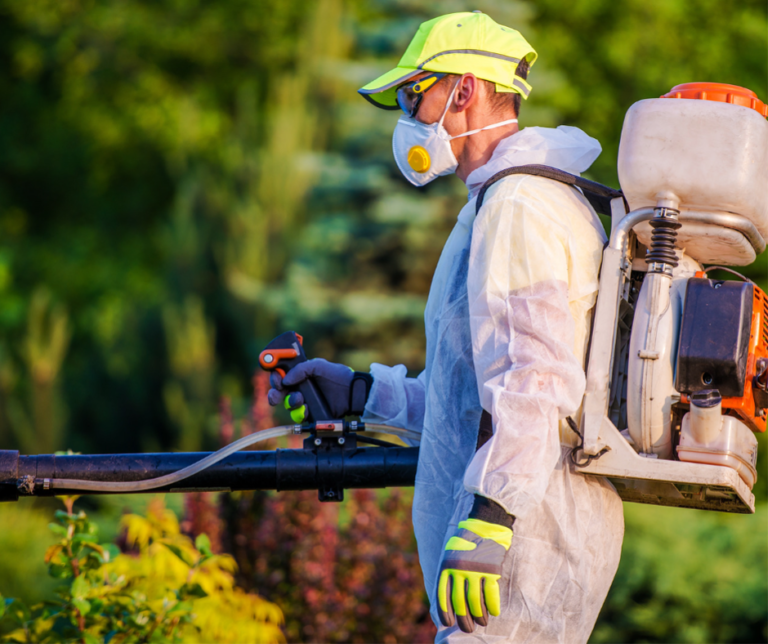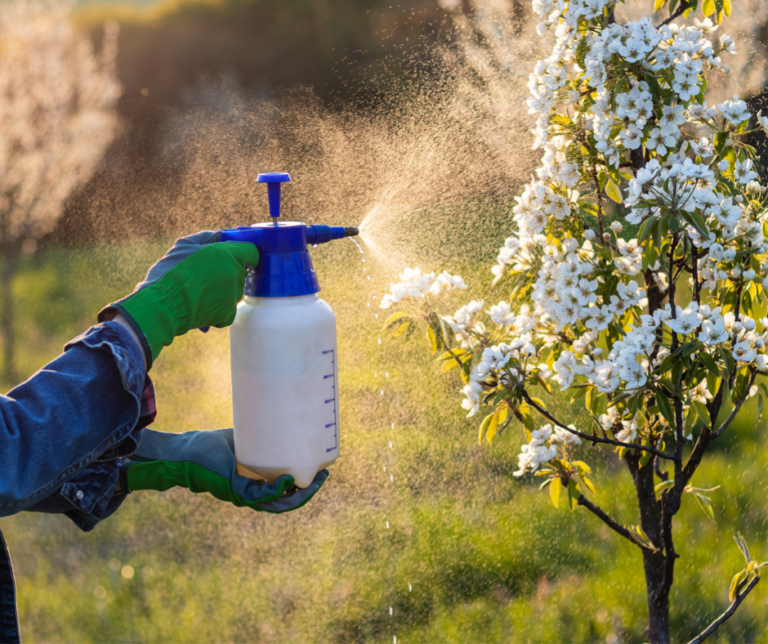Clients are able to receive a free 30-minute consultation with a company representative to get a better understanding of what they need.
Let Us Do the hard work for you
Integrated Pest Management (IPM) has become an essential practice in modern agriculture, and cannabis cultivation is no exception. By using a scientifically grounded, common-sense approach, IPM helps growers prevent, reduce, and eliminate pest infestations. This not only contributes to vigorous, healthy plants but also results in a more environmentally friendly and cost-effective solution for cannabis cultivators.
This comprehensive guide will delve into the various aspects of implementing IPM in cannabis cultivation, and providing valuable insights for growers looking to optimize their pest management practices.

Integrated Pest Management (IPM) for cannabis is an effective and sustainable approach to controlling pests and diseases that can damage cannabis crops. The primary goal of IPM is to maintain a healthy ecosystem and prevent long-term damage from pests and diseases by closely monitoring crops and addressing issues as soon as they arise [1]. It is particularly crucial for cannabis cultivation because of the high value of the crop and the limited availability of appropriate pesticides.
IPM is a strong method that depends on both scientific understanding and common-sense practises to combat pest infestations in a variety of agricultural contexts, including the growing of cannabis. IPM is referred to as an integrated pest management approach. It is predicated on the notion that pests are an inescapable component of the agricultural ecosystem, and that the most effective method for controlling them is a synergistic combination of preventative and reactive methods of pest management. This understanding serves as its foundation. IPM is not a one-size-fits-all solution; rather, it is a sequence of evaluations, decisions, and controls meant to efficiently manage pests while simultaneously minimising the amount of harm caused to both people and the environment.
Effective pest management is both a science-based and practical endeavor, requiring a balanced approach that focuses on prevention and reduction efforts. That’s where IPM comes in, providing a common-sense approach to managing pests while minimizing environmental impact and economic consequences. One of the key steps in implementing IPM is setting action thresholds, which determine whether or not to take pest control measures based on population or environmental conditions.
However, it’s important to remember that not every sighting requires intervention, and that thresholds should be carefully considered to ensure cost-effective solutions that prioritize prevention over eradication. Ultimately, setting action thresholds is just one aspect of a comprehensive IPM strategy that emphasizes knowledge, planning, and collaboration, making it a vital tool for pest management in any setting [2].
Integrated Pest Management, or IPM, is a science-based and common-sense approach to managing pests in agricultural settings. A crucial component of this approach is monitoring and identifying pests accurately. Pests are not always harmful, and some may even benefit crops, which is why accurate identification is so important.
With knowledge of which pests need controlling and which do not, growers can make informed decisions about control measures, minimizing the risk of unnecessary pesticide use or employing the wrong pesticide. This dynamic approach to pest management helps ensure a healthy balance between pest control and protecting the environment.
IPM practitioners should be familiar with various pests specific to cannabis cultivation, such as spider mites, aphids, whiteflies, and thrips. Monitoring tools, like yellow sticky traps, can help detect the presence of these pests in the growing environment. Growers should also keep an eye out for the early signs of fungal pathogen establishment, such as powdery mildew or botrytis, which can have detrimental effects on cannabis plants.
Pests can pose significant threats to the health and productivity of crops, putting cultivators under immense pressure to find effective solutions. While reactive pest management approaches such as chemical pesticide treatments are sometimes necessary, they can be costly and harmful to people and the environment.
This is where the concept of Integrated Pest Management (IPM) comes in – a system that seeks to manage pests through a combination of prevention, cultural and physical controls, and chemical treatments as a last resort. The foundation of any successful IPM program is prevention, which involves managing the growing environment to discourage pests from becoming a threat.
Following are some steps to Consider during Cannabis cultivation:
The cornerstone of any successful IPM program is prevention. By managing the growing environment to deter pests from becoming a threat, cultivators can significantly reduce the need for reactive pest management solutions.
In cannabis cultivation, preventative solutions may involve crop rotation, selecting pest-resistant varieties, and using pest-free rootstock. These measures are often cost-efficient and pose little to no risk to people or the environment.
Pest infestations in cannabis cultivation are heavily influenced by the growing conditions. Factors such as humidity, temperature, and stagnant air conditions can make the environment more conducive to pest and fungal pathogen establishment. For example, high humidity levels can create the perfect environment for mold and mildew growth, while high temperatures can lead to an increase in spider mite populations.
To prevent pest infestations, it is essential to maintain optimal growing conditions for cannabis plants. This includes keeping the relative humidity between 40% and 60% and maintaining temperatures between 70°F and 85°F. Additionally, proper air circulation is crucial to prevent stagnant air conditions that can contribute to pest and disease problems.
Another essential aspect of prevention in pest management is maintaining a clean and sanitized growing environment. This includes removing debris, clearing away standing water, and regularly removing dead plant material. Proper hygiene practices can also help prevent the spread of pests from one area of the growing facility to another.
In addition to physical prevention methods, cultural controls can also be implemented to prevent pest infestations. This may involve training employees to identify and report signs of pest presence, as well as implementing strict protocols for incoming plant material and equipment.
Ultimately, prevention should be the first line of defense in any successful pest management program. By managing growing environments through preventative measures, cultivators can not only reduce the risk of a pest infestation but also minimize the need for costly and potentially harmful reactive solutions.
When prevention methods are no longer effective, IPM programs turn to reactive pest management solutions to reduce the impact of pests on the crop. These strategies may include biological, chemical, and mechanical controls.
Biological controls involve the use of natural enemies, such as predatory insects and beneficial microbes, to help manage pest populations. For example, ladybugs and lacewings are effective predators of aphids, while beneficial nematodes can help control root-feeding pests.

Chemical controls should be used with caution and as a last resort. They involve the application of targeted pesticides, such as insecticidal soaps or neem oil, to manage pests. When using chemical controls, it’s essential to follow label instructions carefully and apply the products at the right time and under the right conditions to minimize harm to beneficial organisms and the environment.
It’s crucial to consider the regulatory requirements when using chemicals in pest management. Ensure to use only approved procedures and chemicals from the regulatory bodies in your jurisdiction to reduce the risk of harm to people and the environment. Violating these regulations can have significant legal consequences that could harm your business’s reputation and financial stability. It’s always best to prioritize environmentally-friendly and non-toxic solutions whenever possible to ensure compliance with regulatory requirements and the safety of all stakeholders involved.
Mechanical controls in pest management refer to physical measures such as hand-picking, trapping, or vacuuming pests, and cultural practices like pruning, weeding, or sanitation. Although these methods can be time-consuming and labor-intensive, they are essential for effective pest management. By removing pests through physical means, cultivators can reduce the need for chemical treatments, thereby minimizing the risk of environmental contamination and pesticide resistance. It’s also important to note that mechanical controls do not harm beneficial insects, making them environmentally sustainable solutions.
To ensure that IPM is implemented successfully in cannabis cultivation, growers must maintain continuity of care throughout the entire growth cycle. This involves knowing how to manage plant growth from the time of propagation, the transplanting process, and even trimming of leaves. All these stages have to be managed with effective IPM practices in mind.
For example, maintaining vigorous and healthy mother stock is critical because it sets the stage for an effective IPM program. If mother plants are not healthy, it can lead to weaker clones that are less able to resist pests and diseases. When transplanting the clones, it’s essential always to ensure that the new growing environment is clean and free of pests and diseases. Cleaning the growing room thoroughly can help prevent pests and diseases from establishing themselves in the new growing environment.
During the vegetative phase, cultivators should closely monitor and assess plants for signs of trouble. This ensures that any issues, particularly those caused by non-insect pests such as mold, bacteria, or viruses, are detected before they can cause too much damage. It’s also an opportunity to see if any cultural control methods would help such as pruning or weeding.
The flowering period is particularly critical because the plant is at its most vulnerable to pest infestations. With the plant expending more energy for bud growth, there’s less energy for the plant’s defense systems, making them more susceptible to pests and diseases. This is where regular monitoring of growing environments is critical, and growers must be vigilant about assessing plants for pests and treating them in a way that’s compatible with the flowering stage.
By implementing regular monitoring and assessment of growth environments and developing and deploying appropriate and timely pest management solutions at each stage of the growth cycle, growers can significantly reduce the incidence of pests and diseases in their cannabis crops. Doing so not only boosts productivity but reduces potential risk to those involved in cultivation from harmful pesticides.
The ultimate goal of an Integrated Pest Management program is to eliminate or minimize the impact of pests on the crop. This is achieved through a comprehensive and well-planned approach that incorporates a combination of prevention, reduction, and control strategies to manage pest populations effectively and sustainably.
In certain cases, complete elimination of pests may not be feasible or economically viable due to various factors such as the cost of control measures, the nature of the pests, or the specific conditions of the growing environment. In such situations, IPM aims to keep pest populations below economically damaging levels, ensuring that the impact on the crop is minimal and manageable.

Integrated Pest Management is a sustainable and effective approach that offers comprehensive pest management solutions for cannabis cultivators while minimizing harm to the environment and human health. By understanding the scientific principles of IPM, growers can develop common-sense practices that promote healthy plants and high-quality yields.
An excellent IPM program in cannabis cultivation incorporates a range of practices, including prevention, reduction, and elimination using physical, mechanical, and cultural controls as well as natural and chemical controls in extreme cases. This programs aim towards keeping pest populations below the economic damage threshold. Cultivators who implement these practices can achieve sustainable pest management solutions that promote healthy and vigorous plants, minimize damage, and eliminate the need for reactive measures.
The right growing conditions, such as soil, light, temperature, and humidity, are critical in preventing pest infestations. Continuity of care from propagation through the vegetative phase, flowering period, and harvest plays a crucial role in minimizing the risk of pest infestations.
Regular monitoring and timely action are critical in maintaining the effectiveness of IPM programs. Vigilance and observance in identifying an infestation, prompt reporting of its presence, and appropriate corrective measures such as cultural controls can prevent a minor infestation from turning into a full-blown crisis.
In cannabis cultivation, the use of chemical control should be the last resort, and should be used with due precautions to avoid contaminating the environment and ensure that non-target organisms are not harmed.
In conclusion, the application of IPM principles can support successful pest management in cannabis cultivation. By focusing on prevention, early detection and intervention and minimizing harm to the environment and human health, growers can experience long-term benefits including bountiful yields of high-quality cannabis.
Cannabis Integrated Pest Management (IPM) is a holistic and environmentally friendly approach to pest control in cannabis cultivation. It involves a combination of prevention, monitoring, and targeted control methods to minimize the impact of pests on cannabis crops while reducing the reliance on chemical pesticides.
IPM is important in cannabis cultivation because it helps growers maintain healthy and high-quality crops, ensures a safer working environment, reduces the risk of pesticide residues in the final product, and promotes environmental sustainability by minimizing the use of harmful chemicals.
The key components of a Cannabis IPM program include setting action thresholds, monitoring and identifying pests, implementing prevention strategies, and utilizing targeted control methods when necessary.
You can prevent pests in your cannabis cultivation by selecting pest-resistant plant varieties, maintaining proper sanitation and hygiene practices, controlling humidity and temperature, ensuring adequate airflow, and implementing cultural and mechanical control methods such as crop rotation and the use of physical barriers.
Some examples of biological control methods in Cannabis IPM include the introduction of beneficial insects like ladybugs, lacewings, or parasitic wasps that prey on pests, as well as the use of microbial agents such as Bacillus thuringiensis (Bt) to control caterpillars and other pests.
Chemical pesticides should be used in Cannabis IPM as a last resort, after other prevention and control methods have proven insufficient. When using chemical pesticides, choose the least toxic and most environmentally friendly options available, and apply them in a targeted and responsible manner to minimize the risk of resistance development and negative impacts on non-target organisms.
Regularly inspect your cannabis plants for signs of pest damage or infestation, and use tools such as magnifying lenses, sticky traps, or pheromone traps to help detect and identify pests. Accurate identification of pests is crucial for making informed decisions about appropriate control measures.
Yes, IPM can be implemented in both indoor and outdoor cannabis cultivation. While the specific strategies and methods used may vary depending on the growing environment, the principles of IPM—prevention, monitoring, and targeted control—remain consistent across all types of cultivation settings.
MFLRC is a one-stop shop for all of your Licensing, quality assurance and compliance needs. Our team has years of experience in the cannabis industry and are experts in all facets. We offer a variety of services that will save you time and money. Let us take the burden off your shoulders so you can focus on what’s important – growing your business.
Contact us Now!
Mussarat Fatima, President, and owner of MF Cannabis License and Regulatory Consultants has more than twenty years of experience in Quality Assurance, Quality Control, and Regulatory Affairs within the pharmaceutical, Food and Cannabis industries. She has a Master’s Degree in Food Sciences and Biochemistry; in addition to this, she also has a diploma in pharmaceutical Quality Assurance, Regulatory Affairs, and Quality Control. Also, she has completed several certifications specifically in Cannabis Quality Assurance, Regulatory Affairs, and Facility management from recognized institutes in Canada.

Written By: Mussarat Fatima
President at MF License & Regulatory Consultants
Website: https://mflrc.com/
Contact: info@mflrc.com